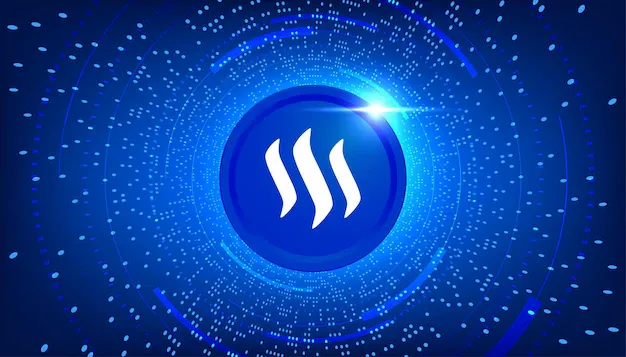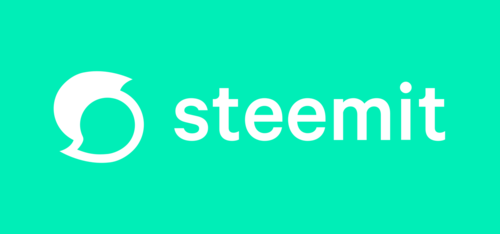Steemit Crypto Academy Contest / S5W2 - Get to know the Steem Blockchain by @beckie96830

The crypto academy community wants participants to discuss and explain their understanding of The Steem Blockchain, I will be responding to the assignment given.
Question
Discuss the consensus protocol used in Steem, Proof of Delegated Participation. What are the differences between DPoS and PoW?
Steem Blockchain Consensus Protocol
Steem blockchain introduced in March of 2016 by Ned Scott and Dan Larimer is a crypto incentive-based blockchain that rewards creators for creating original and unplagiarized content and engaging with other nodes on the Blockchain. The Blockchain's primary aim is to encourage social engagement globally through writing and media-related content, this provides a wide library of open-source information based on the writer's personal experiences and also provides a means to earn through cryptocurrency.

Steem Blockchain uses proof-of-delegated participation as its consensus mechanism. The proof of Delegated Participation (PoDP) consensus mechanism adopts the vested interest approach, where participants (stakeholders) with vested interests are allowed to participate as validator nodes and Steem Blockchain witnesses. Similar to real-life scenarios where stakeholders in companies make critical decisions about the company's future.
Ideally, the Blockchain users vote for delegates with vested interests to become witnesses and validator nodes. The vested interest can be fully owned by the delegates or can be delegated to them by the users. The combined vested interest listed under the stakeholders serves as their stake in the Blockchain.
The proof of delegated participation approach aims to reduce security risk and the required computational resources of the Blockchain as the stakeholders with vested interest vote and act as miners, to verify transaction blocks.
Delegated Proof of stake vs Proof of work
There are some notable differences between the PoW and the DPoS, some of which include
The PoW utilizes high computational resources to validate blocks of transactions while the DPoS rely on the voted delegates to validate blocks of transactions.
PoW is considered not to be easily monopolized as nodes with high computational power participate in block validation while DPoS is likely to be monopolized as validator nodes that rely on the votes of the users to maintain their status as validators can easily collaborate with users to maintain votes and split the profit. This can lead to a 51% attack on the Blockchain.

Question
How often does a block occur in Steem and how many tokens does it use? Discuss this topic.
Blocks in Steem Blockchain
Steem Blockchain validators produce new transaction blocks every three seconds using the network time protocol to synchronize the block production time across the Blockchain network. As previously explained, Steem delegates are selected through votes by the users, and there are 21 delegates selected with 20 delegates being active. The active delegates participate in block production and signing of a transaction within the given timeframe.
During each round of block production, the selected active delegates are shuffled from time to time to prevent any form of collaboration between the delegates. This ensures that the process is truly decentralized, hence giving the opportunity to every delegate node willing to participate in the block production.
How many Tokens ?
The steem Blockchain has a native token called STEEM. Steem was introduced alongside the steem Blockchain in 2016. Though, there were no public records of token sales of the STEEM token. The token had struggled to an average price above the $1 mark. According to coinmarketcap's official website the price metrics of the STEEM token has been bearish, following the cryptocurrency downhaul of price in 2018, the STEEM token has struggled to maintain its price above $1
Steem is used within the Blockchain as the governance token, which allows users and delegates to vote and participate actively in the validation and signing of transaction blocks on the Blockchain. This implies that the number of steem tokens owned by delegated determines how weighted their vested interest would perform on the Blockchain.

Question
Do you know what was the first application to run on the Steem Blockchain? Discuss this application.
First DApp On Steem Blockchain

The first DApp to run on Steem Blockchain is the Steemit blog app which was launched in 2016. Steemit is a content-based social blogging website that rewards its users with incentives for creating refined original content. Steemit's blog is based on written content, where users can join communities to engage and share related content. Steemit blog was the first decentralized social network app built based on blockchain technology standards.
Steemit's blog has a token scheme that is comprised of four tokens. The Steem Power (SP) is used as a governance token and the other three as incentive tokens which are Steem Backed Dollar (SBD), STEEM, and TRX. The Steem Power (SP) token is used by the Blockchain user as a vested interest in the Blockchain that gives them the power to vote for delegates or give delegates power to validate and sign transactions when voted. Ideally, the vested interest expressed in Steem Power (SP) is weighted, making it an essential token for governance in the Blockchain.
The reward other three tokens are used within the Blockchain as incentives given to users (nodes) as a reward for content posted on the blockchain, usually assessed based on the public appeal of the post created, where curators (steem users) can either upvote or downvote a post. The valuation of the reward depends on percentages allocated to the post by the steem token curators, where users with high STEEM token staked on the blockchain has more voting power than users with fewer STEEM token staked on the Blockchain.
Steemit being a decentralized blog has a unique feature over other forms of social blogs as it banks on transparency in the activities of its users. Users can publicly see the earnings of each content posted and can openly investigate the genuinety of the content of the post shared.
Steemit's blog encourages users to follow the necessary processes of reading and voting for a post. This is done through reading to verify the post's originality, if the content is unplagiarized, curators (users) can Up-votes a certain percentage of the post, otherwise a downvote. Steemit curation weight on contents is dependent on the voting power of the user expressed as steem power. Ideally, the steem token is in an equal ratio of 1:1 to the steem power, making it possible to power up steem tokens to increase voting influence on the blog platform. Steemit is indeed a wonderful DApp to use!

Question
What is Proof of Brain (PoB)?
Proof of Brain (PoB)

Proof of Brain is an incentive consensus algorithm used in a decentralized social network that rewards creators for their intellectual properties. i.e rewarding users for creating unique content on the decentralized social network. The PoB is usually comprised of a reward pool, weighting mechanism, and knowledge of the users. A good example of this concept is that of the steemit blog.
The PoB in Steemit combines these three elements to structure its consensus algorithm. Ideally, when users create unique content, they get rewarded from the reward pool. An assortment of recently mined Steem tokens is included in the reward pool. The reward pool is divided, and on the Steem Blockchain, authors and curators receive around 50% of the reward as compensation for their work.
Users' ability to read, assess, and vote on content based on their judgments is referred to as their "user knowledge." Furthermore, making it possible for curators to detect copying in content, this aids in the continuing battle against plagiarism on the Steem blockchain. Users' influence on the Blockchain is expressed through the weighted stake. Steem power (SP), which has a 1:1 relationship with the Steem Token, is used to symbolize this. The user could ideally have a greater impact if their Steem power is high. This pertains to selecting content to vote on, getting incentives from the reward pool, etc. According to this, content that receives upvotes from highly influential accounts is probably going to receive greater rewards.

Conclusion
There are many consensus algorithms used across different Blockchains, with each having its benefits and drawbacks. The PoDP which is similar to the Delegated Proof of stake is what is used in Steem Blockchain as its consensus mechanism. This mechanism allows for total decentralization of the Blockchain as it allows for rotation of the delegates through voting, while the PoB is usually comprised of a reward pool, weighting mechanism, and knowledge of the users.
Very interesting post, I think I'm starting to get interested again in doing homework with study materials like this.
Favorite top for a witness
Yes the security threat because of censorship are also discouraged by disqulifyg guilty and witnesses also need to upload the transaction signature within 24 hours of block verification.
You are right . Theoritically that's possible butbin practice there are mechanisms to curb such malaciois consolidation .
Good luck
The 3 seconds block time of the Steem blockchain when compared to the Bitcoin blockchain that has 10 minutes block time makes transactions on the Steem blockchain more faster and scalable, also the transactions only uses bandwidth.
Yeah, that's true
The 3 seconds block time of the Steem blockchain is considered way faster than the Bitcoin blockchain as it utilises a 10 minutes block timeframe. Thereby making transactions on the Steem blockchain much faster and also scalable.
Yeah, indeed it is. Thanks for stopping by
Hello dear friend,
you are right dear I must confess, as normal your post is of very high quality and very educative. Indeed the delegated proof of participation supports the voting of witness just like the Tron Blockchain, steem holder votes on witness. So therefore the are given power to represent other users and the could be removed just by reversing their votes. This consensus mechanism is really awesome and powerful, making it really admired in the Blockchain technology world.
Thank you very much for sharing, please you can check my own entry here
wishing you success
Excelente manejo y desarrollo del tema.
Vemos que en la blockchain de Steem utiliza el mecanismo de consenso es el de prueba de participación delegada (PoDP), el cual no requiere de grandes y potentes equipos informáticos, y la elección de los nodos validadores de los bloques son elegidos de forma democrática y siempre son aleatorios.
Por otra parte vemos que de esta blockchain surgió la creación de Steemit, la cual es una red social que marca una gran diferencia en relación con las demás redes sociales centralizadas. Lo mas interesante de esta aplicación es la implementación de La prueba de Cerebro con la cual se recompensa el esfuerzo intelectual de los usuarios que se encargan de crear contenido original y de calidad, así como también de aportar y apoyar el contenido de otros usuarios.
Saludos!!